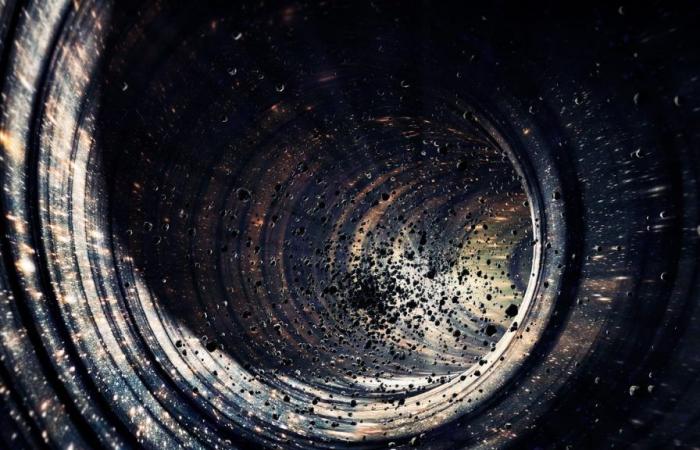Bad news for the hypotheses according to which the dark matter be composed of the offal of the gods primordial black holesthose that were formed in the first moments of the life of the Universe, immediately after the Big Bang: the result of twenty years of observations by the scientists responsible for the experiment Ogle (Optical Gravitational Lensing Experiment) in fact seems to show that primordial black holes can account for, at most, only a small percentage of the entire share of dark matter (thought to be) present in the Universe. The discovery of the researchers, belonging to the astronomical observatory of University of Warsawin Polandis described in two studies published in Nature and on Astrophysical Journal Supplement Series.
What Dark Matter Should Be
At the moment, dark matter has never been directly observed. However, several experimental observations, verified several times and independently, seem to be explainable only by assuming that a type of matter “different” from ordinary matter exists in the Universe. Dark matter, precisely. It all begins with the so-called Standard model of particle physics, the theory (also verified) that describes the nature and behavior of ordinary matter; this theory, although correct, seems to be somewhat incomplete. Over the course of the last century, in fact, astronomers and cosmologists began to accumulate various experimental observations, linked above all to phenomena that have to do with severitywhich could not be explained or predicted by the Standard Model. Among these, for example, the rotation speed of stars and galaxies, some characteristics of cosmic background radiation (i.e. the “echo” of the Big Bang) and the curvature of light due to the so-called gravitational lensesa phenomenon predicted by general theory of relativity Of Albert Einstein.
If we consider only the particles of ordinary matter, these phenomena are actually inexplicable; for this reason, already in 1932, the Dutch astronomer Jan Joort proposed the presence of another type of matter, dark matter, precisely, to reconcile experimental observations and theoretical models. However, this type of matter has never been observed experimentally, and we don’t have a precise idea yet of what its characteristics should be. Oort’s hypothesis, then refined in the following decades, is that dark matter interacts with ordinary matter via the severity; according to current estimates, this entity would actually represent the majority of the Universe – about 85% of all existing matter and 27% of the total mass. According to other observations, ordinary matter would constitute just 5% of the total mass and energy balance of the Universe: in the Milky Way, for example, for every kilo of ordinary matter there would be fifteen of dark matter, which does not emit light and interacts only through gravity.
“The nature of dark matter It remains a mystery. Most scientists believe that it is composed of still unknown elementary particles – commented Przmek Frostone of the authors of the works just published – but unfortunately, despite decades of attempts, no experiments, including those conducted at Large Hadron Collider [il grande acceleratore di particelle di Ginevra dove è stato identificato il bosone di Higgs, nda]managed to isolate new particles that could be linked to dark matter”.
The problem of primordial black holes
Let’s leave dark matter aside for a moment and dedicate ourselves to another oddity, relating to gravitational waves and there black holes. In 2015, the experiments Ligo e Virgo they succeeded, for the first time in the world, in directly observing a gravitational wave (i.e. a perturbation of space-time as predicted by the theory of general relativity) generated by the merger of two black holes. Since then, they have observed many others, about 90, and Over time, a strange thing has come to the attention of astronomers: The black holes detected by Ligo and Virgo are typically much more massive than those present in the Milky Way (20-100 solar masses and 5-20 solar masses, respectively). “The reason why these black hole populations are so different – says Mróz again – it is one of the greatest mysteries of modern astronomy”.






